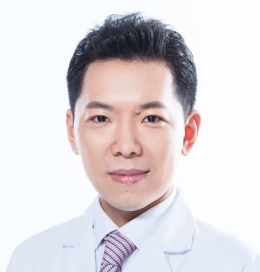
Honors & Talent Programs
- Distinguished Talent, Jiangsu Province “333 High-Level Talent Training Program”
- Young Medical Elite, Jiangsu Province “Xingwei Project”
- Outstanding Young/Mid-Career Faculty Award, Nanjing Medical University
- Top Young Talent, Jiangsu Provincial Hospital
Leadership Roles
- Youth Committee Member:
Dermatology & Venereology Society, Chinese Medical Association
Dermatology Society, Chinese Medical Doctor Association
- Executive Committee Member, Aesthetic Medicine Branch, Jiangsu Medical Association
- Vice President, Aesthetic Physicians Branch, Jiangsu Physicians Association
- Chair-Elect, Minimally Invasive & Laser Beauty Branch (and Vice Chair, Scar Branch), Jiangsu Plastic Surgery & Aesthetic Medicine Association
Awards & Recognitions
- Outstanding Young/Mid-Career Dermatologist, Chinese Medical Doctor Association
- Principal Investigator:
3× National Natural Science Foundation of China (NSFC) Grants
1× Jiangsu Provincial Natural Science Foundation Grant
- Recipient:
Chinese Medical Science & Technology Award
Jiangsu Science & Technology Progress Award
Jiangsu Health Department New Technology Introduction Award
Academic Output
- 60+ SCI-indexed publications (first/corresponding author)
- 2 patents | 3 book contributions
Abstract submitted for the 5th International Keloid Symposium
Background and aim: Keloids cannot be effectively treated using monotherapy regimens. This study aimed to evaluate the efficacy and safety of ablation (a novel needle-assisted electrocoagulation technique) combined with pharmacotherapy (corticosteroid and 5-fluorouracil [5-FU] injections) in removing keloids and to investigate the underlying biological mechanisms.
Methods: The effects of energy consumption and duration of needle-assisted electrocoagulation on the ablation zone were tested in porcine liver tissue, which simulates human skin. The regulatory effects of ablation combined with pharmacotherapy on collagen deposition, cell proliferation, and angiogenesis were analyzed in a keloid-bearing nude mouse model in vivo. In a clinical trial involving six patients with keloids, the Vancouver Scar Scale (VSS) and Patient and Observer Scar Assessment Scale (POSAS) scores were graded before treatment and 1 month after one cycle of ablation combined with corticosteroid and 5-FU therapy.
Results: Higher energy consumption and longer duration of electrocoagulation resulted in a larger ablation zone and higher surface temperature. Ablation combined with pharmacotherapy significantly reduced keloid volume in nude mice, upregulated MMP-1 and MMP-3, downregulated COL I and COL III, and inhibited angiogenesis and proliferation. This combination also significantly reduced the VSS and POSAS scores in patients with keloids after treatment without any obvious adverse events.
Conclusion: Our findings show that electroablation combined with pharmacotherapy effectively reduces keloid volume by inhibiting collagen deposition, angiogenesis, and cell proliferation. Thus, this novel combination may serve as a safe therapeutic approach for keloid removal.

